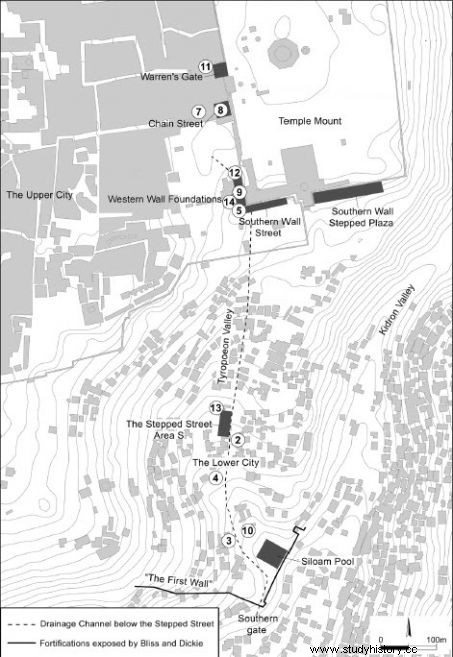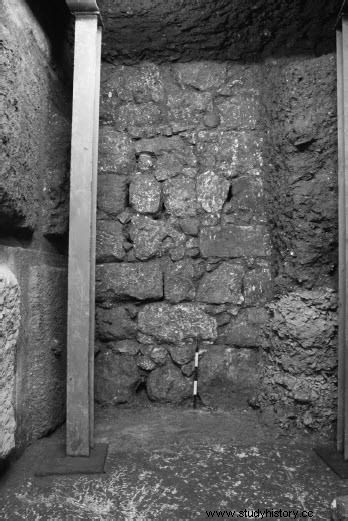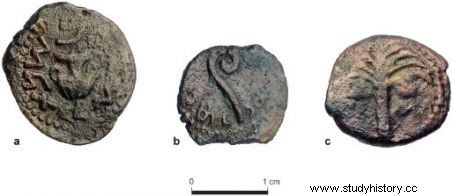A team of archaeologists has managed to precisely date the construction of a paved street discovered under Jerusalem:it would have been traced around the year 30, during the mandate of the Roman governor Pontius Pilate.

View of the Temple Mount, within the walls of Jerusalem.
In almost half a century, many streets dating from the beginning of Roman rule have been unearthed in Jerusalem. They were found more particularly within the famous ramparts of the "City of David", classified as a "national park" by the Israeli authorities. This oldest part of the city, a veritable jewel of history, some elements of which date back to the 10th century BC, still today houses a plethora of monuments and places of worship. Among them is the Temple Mount, the holiest place in Judaism, which corresponds to the site on which the famous Temple of Jerusalem stood.
Of this temple destroyed by Titus in the year 70, all that remains today is the western retaining wall, known as the Wailing Wall. Every day, thousands of pilgrims and tourists flock to its foot to meditate there. But there are more than three millennia, when the Temple – the one rebuilt by Herod I the Great – was still standing, the faithful were already thronging to this very spot. In any case, this is confirmed by the work of a team of archaeologists from the University of Tel Aviv, whose conclusions were published on October 20, 2019 in le Journal of the Tel Aviv Institute of Archeology .

© DRAWING:D. LEVI, LPN; PRINTED BY PERMISSION OF THE SURVEY OF ISRAEL
In almost half a century, many streets dating from the beginning of Roman rule have been unearthed in Jerusalem. They were found more particularly within the famous ramparts of the "City of David", classified as a "national park" by the Israeli authorities. This oldest part of the city, a veritable jewel of history, some elements of which date back to the 10th century BC, still today houses a plethora of monuments and places of worship. Among them is the Temple Mount, the holiest place in Judaism, which corresponds to the site on which the famous Temple of Jerusalem stood.
Of this temple destroyed by Titus in the year 70, all that remains today is the western retaining wall, known as the Wailing Wall. Every day, thousands of pilgrims and tourists flock to its foot to meditate there. But there are more than three millennia, when the Temple – the one rebuilt by Herod I the Great – was still standing, the faithful were already thronging to this very spot. In any case, this is confirmed by the work of a team of archaeologists from the University of Tel Aviv, whose conclusions were published on October 20, 2019 in le Journal of the Tel Aviv Institute of Archeology .

© DRAWING:D. LEVI, LPN; PRINTED BY PERMISSION OF THE SURVEY OF ISRAEL
A spacious pilgrimage route
A wide street, 600 meters long and about 8 meters wide, thus connected in the first century after the birth of Jesus Christ two of the most important places in Jerusalem:the basin of Siloam, a set of water reservoirs corresponding to a biblical location – in this case, the pool where Jesus restored sight to a man born blind – and the Temple Mount. A grandiose pilgrimage route which, according to the analyzes of researchers, would date precisely from the mandate of Pontius Pilate, i.e. from 26 to 37 A.D. As a reminder, it is to this Roman governor of Judea that we attribute the arrest and condemnation of Christ, although his verdict was given under pressure from the aristocrats.
For a prefect of the time, eleven years of governance was the mark of exceptional longevity in this unstable and turbulent new province of Judea. But on an archaeological scale, eleven years often represent only an elusive fragment of history. However, in this specific case, the experts managed to capture it thanks to numismatics. A hundred coins found under the cobblestones made it possible to precisely date the construction of this sumptuous street.

© M. Hagbi, LPN
Coins minted before the year 31 as a clue
All correspond to a period of time between 17 and 31 AD, thus confirming that the paving of the street must have been carried out before the year 31, and therefore during the reign of Pilate. "Coin dating is very accurate" , says Dr. Donald T. Ariel, an archaeologist and numismatic expert at Tel Aviv University. "As some coins are marked with the year they were minted, this means that if a coin indicating the year 30 is under the street, it must have been constructed in the same year or later."
But how can we be sure that the construction of the street is not much higher than the year 30? "Because statistically the coins minted about ten years later are the most common in Jerusalem. Not finding them under the street therefore means that the street was built before they were put into circulation, which cannot be than in the time of Pilate" , continues Donald Ariel.

© Nahshon Szanton, Journal of the Tel Aviv Institute of Archeology
The researchers estimate that the installation of this track required the use of approximately 10,000 tonnes of limestone rock extracted from quarries. An operation so delicate that it could only be a pilgrimage route, a thesis that reinforces the dimensions of the aisle. "If we were facing a simple footbridge connecting point A to point B, there would be no reason for it to be so large" , conclude Dr. Joe Uziel and Moran Hagbi, archaeologists for the Israel Antiquities Authority and co-authors of the study.
In fact, if this street dates from the time of Pontius Pilate, theoretically Jesus Christ could have used it:according to the New Testament, he went to the Temple in Jerusalem on several occasions.
